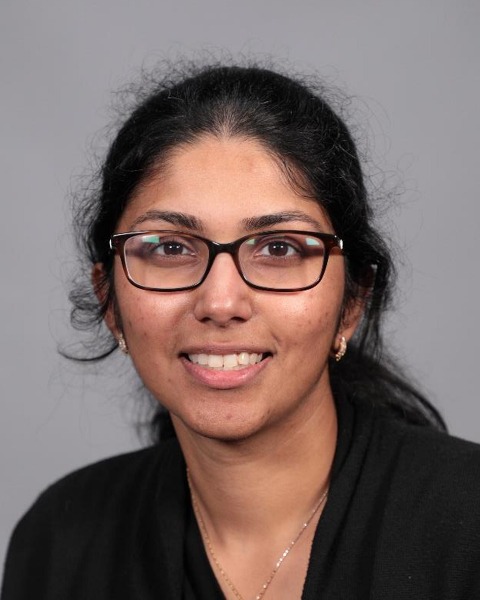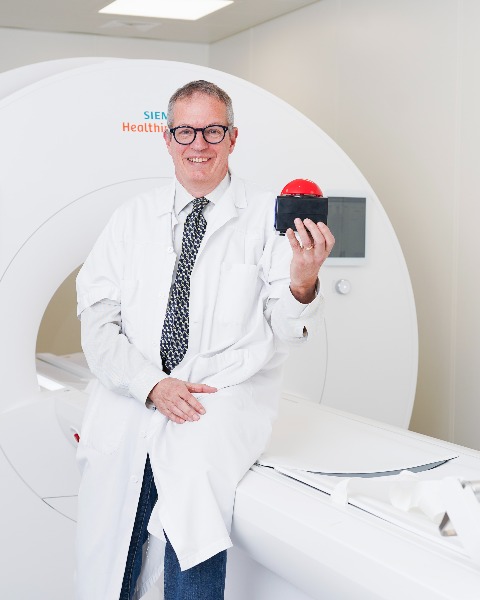Quick Fire Cases
Ferumoxytol-enhanced cardiovascular MR for structural and prosthetic valvular evaluation on 0.55T: 2D and 5D cine (QF_SA_143)
- SS
Sneha Sharma, DO
Cardiology Fellow
Ohio State University - SS
Sneha Sharma, DO
Cardiology Fellow
Ohio State University - KG
Katarzyna E. Gil, MD, PhD
Assistant Professor
The Ohio State University - MT
Matthew S. Tong, DO
Associate Professor - Clinical
The Ohio State University 
Juliet Varghese, PhD
Research Assistant Professor
The Ohio State University- KB
Katherine Binzel, PhD
Research Scientist
The Ohio State University - AG
Akash Goyal, MD
Fellow
The Ohio State University - NJ
Ning Jin, PhD
Senior Key Expert
Siemens Healthineers - XS
Xavier Sieber, MSc, BSc
PhD candidate
CHUV UNIL, Switzerland 
Yuchi Han, MD
Professor
The Ohio State University
Orlando P. Simonetti, PhD
Professor
The Ohio State University
Mathias Stuber, PhD
Full Professor
CIBM-CHUV-UNIL
Laussane University, Switzerland- DG
Daniel Giese, PhD
Scientist
Siemens Healthineers, Germany - YL
Yingmin Liu, PhD
Research Engineer
The Ohio State University 
Ruud B. Van Heeswijk, PhD
Senior Lecturer
Lausanne University Hospital (CHUV), Switzerland
Presenting Author(s)
Co-Author(s)
Primary Author(s)
Co-Author(s)
A 33-year-old male with BMI 58 kg/m2, DiGeorge syndrome with interrupted aortic arch status post end-to-end anastomosis and aortic graft repair, bicuspid aortic valve (AV) with regurgitation status post mechanical AV replacement, and ventricular septal defect status post patch repair underwent cardiovascular magnetic resonance imaging (CMR) to assess prosthetic AV, biventricular function, thoracic aorta, and to exclude residual intracardiac shunting given nondiagnostic transthoracic echocardiography. Due to severe obesity and claustrophobia, exam was performed on 0.55T scanner (MAGNETOM Free.Max, Siemens Healthineers, Forchheim, Germany).
Diagnostic Techniques and Their Most Important Findings:
Ferumoxytol was infused at 4 mg/kg ideal body weight. Previously described CMR imaging protocols using the research prototypes on 0.55T were followed for cine, phase contrast flow, and thoracic aorta MR angiography (MRA) [1,4]. Free-breathing, self-gated whole heart 5D cine was also acquired using a 3D phyllotaxis bSSFP free-running research sequence [1]. Biventricular size (LVEDVI 92 ml/m2, RVEDVI 103 ml/m2) were normal with low normal biventricular systolic function (LVEF 51%, RVEF 45%) on 2D cine imaging. Mechanical aortic prosthesis showed no evidence of obstruction on phase contrast imaging. There was no significant intracardiac shunting (Qp:Qs=1). Thoracic MRA demonstrated an intact aortic graft (Figure 1). 5D cine images showed reduced valve artifact, notably along long axis cines showing blood pool contrast and prosthetic leaflet motion within the cage when compared to 2D (Figure 1).
Learning Points from this Case:
CMR is the gold standard non-invasive imaging modality for cardiovascular evaluation [2,3]. However, bore size on conventional field strength scanners (1.5T, 3T) might preclude performing CMR or result in suboptimal image quality in obese patients [2-6]. Higher BMI ranges can be accommodated on ultra-wide bore commercial 0.55T scanner. Conventional field CMR can be limited by metal-induced susceptibility artifacts, that may be reduced with lower field strength CMR [7]. CMR imaging with ferumoxytol contrast can be used to enhance blood signal and therefore increased signal-to-noise ratio in the low-field environment. The prolonged blood circulation time of ferumoxytol can additionally support long acquisitions such as the 5D cine, which provides a comprehensive structural cardiac evaluation with excellent prosthetic leaflet visualization not previously visualized on conventional field strength systems. Our case highlights a unique application of ferumoxytol-enhanced 0.55T CMR to evaluate mechanical valve function with 2D and 5D acquisitions. It also demonstrates potential to improve diagnosis and management in a growing obese population without image quality degradation seen in traditional imaging on a lower cost system, making CMR more accessible [2,3,6].

